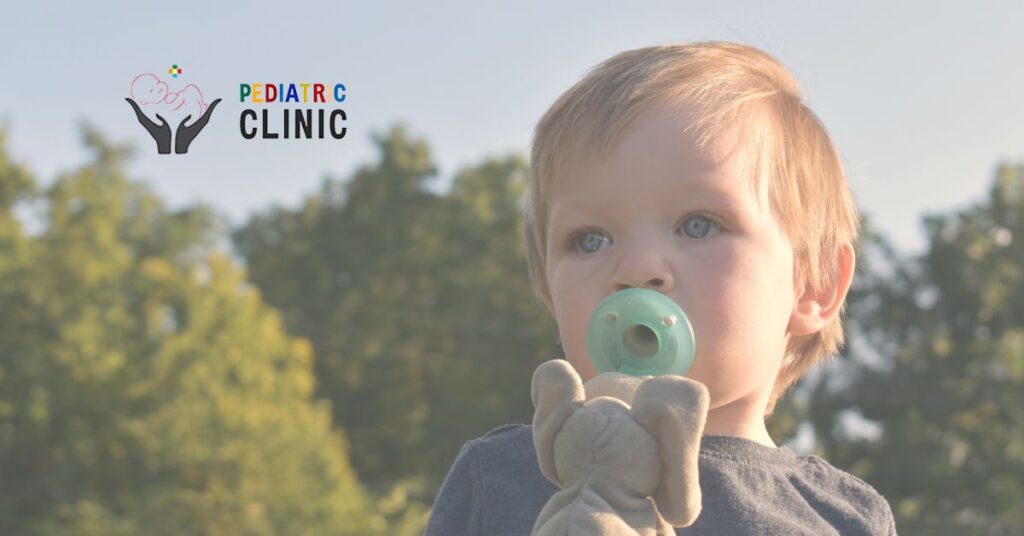When it comes to newborn comfort and parenting choices, pacifier use often sparks a lot of debate. For some parents, a baby pacifier feels like a lifesaver during long, restless nights, while others worry about long-term effects. At Pediatric Newborn Clinic, we guide parents through these everyday decisions with the latest pediatric advice and practical tips.
So, is using a pacifier for babies helpful or harmful? The answer is — it depends on how, when, and for how long you use it.
Why Many Parents Choose a Baby Pacifier
Most newborns have a strong natural instinct to suck, and pacifier use can satisfy that need, especially when feeding isn’t necessary. From a pediatric standpoint, the baby pacifier has several short-term advantages that can help both the infant and the parents:
✅ Benefits of Pacifier Use for Babies:
- Soothes and comforts: Pacifiers can help calm a fussy or crying baby quickly.
- Improves sleep: A pacifier at bedtime often helps babies fall asleep faster and may reduce night waking.
- May reduce the risk of SIDS: Studies have shown a connection between pacifier use during naps/bedtime and reduced risk of Sudden Infant Death Syndrome (SIDS).
- Helps during stressful situations: Like immunizations, air travel, or colic episodes.
At Pediatric Newborn Clinic, we often recommend limited, mindful pacifier use in the first six months when its soothing effect is most helpful and least likely to cause complications.
When Pacifier Use Becomes Harmful
While pacifiers offer comfort, extended and inappropriate pacifier use can cause issues — especially if the habit continues beyond infancy. Pediatricians caution against excessive reliance, particularly as your baby grows older.
❌ Risks of Prolonged Pacifier Use:
- Dental development issues: Long-term pacifier use may affect teeth alignment and mouth structure, especially after age 2.
- Ear infections: Using a pacifier beyond 6 months is associated with an increased risk of ear infections.
- Speech delays: Excessive pacifier use can impact early speech development due to reduced verbal interaction.
- Dependency: Over-reliance can lead to emotional dependency and disrupt natural self-soothing skills.
At Pediatric Newborn Clinic, we advise gently weaning your baby off the pacifier between 12 to 18 months, depending on their comfort and developmental stage.
Best Practices for Safe Pacifier Use
If you choose to use a pacifier for your baby, following pediatric-approved safety guidelines can help you avoid most of the risks.
✔️ Pacifier Use Tips from Pediatric Newborn Clinic:
- Choose the right size: Always use age-appropriate pacifiers with ventilation holes.
- Keep it clean: Sterilize regularly and never dip it in sweet substances.
- Limit usage: Use pacifiers only during naps, bedtime, or moments of distress.
- Avoid force-feeding: If your baby isn’t interested, don’t push the pacifier.
- Wean gradually: Begin reducing use after 6 months to avoid dependency.
By maintaining proper hygiene and boundaries, pacifier use can remain a helpful and safe comfort tool for your baby.
When to Talk to a Pediatrician About Pacifier Use
If you’re unsure whether pacifier use is affecting your baby’s oral development or behavior, it’s always wise to consult your pediatrician. At the Pediatric Newborn Clinic, our team will evaluate your baby’s growth, feeding patterns, and emotional needs to offer personalized advice.
We understand that every child is unique — some babies outgrow the pacifier naturally, while others need a little help. Either way, we’re here to support your parenting journey with expert pediatric care.
Final Takeaway: Is a Pacifier Good or Bad for Your Baby?
In moderation, pacifier use for babies is generally safe and soothing, especially in the first year. The key lies in understanding when to introduce, when to limit, and when to stop. By combining parental intuition with trusted pediatric advice, you can make the right choice for your child. At Pediatric Newborn Clinic, we’re committed to helping you raise healthy, happy children — with every tool, tip, and reassurance you need.



